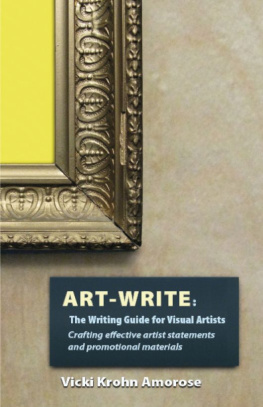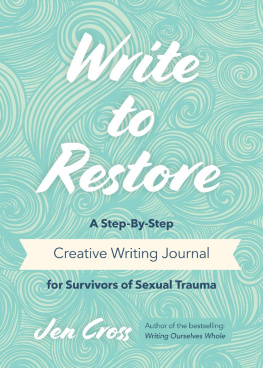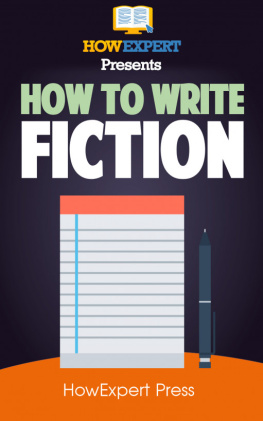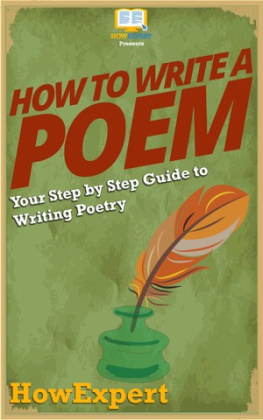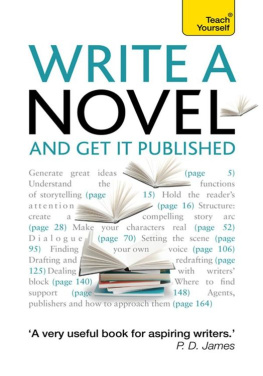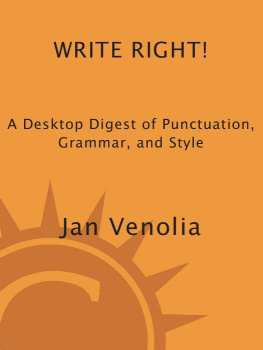ART -W RITE:
T HE W RITING G UIDE FOR
V ISUAL A RTISTS
Crafting Effective Artist Statements and PromotionalMaterials
by Vicki Krohn Amorose
LUMINARE PRESS
EUGENE, OREGON
Art-Write: The Writing Guide for Visual Artists
Copyright 2013 Vicki Krohn Amorose
Smashwords Edition
All rights reserved. This book or any portion thereofmay not be reproduced or used in any manner whatsoever without theexpress written permission of the publisher, except for the use ofbrief quotations in a book review.
Dorothea Lange photos, pages 54-56, courtesy ofLibrary of Congress,
Prints and Photographs Division
Cover Design: Paul Mavrides
eBook Formatting: Maureen Cutajar
Luminare Press
467 W 17th Ave
Eugene, OR 97401
www.luminarepress.com
LCCN: 2013930288
ISBN: 978-1-937303-12-9
This book is dedicated to my dear husband,
David Amorose
Contents

Preface:
Words Are Powerful

L ANGUAGE AND IMAGE CONNECTIN MYSTERIOUS WAYS .
I first experienced this connection as anart history student. In darkened lecture halls, gazing at detailedslides of art Id never seen before and listening to a flow ofdescriptive words, I entered a state of true amazement. To thecredit of my professors, at the end of each class I not only knewso much more, but I could see so much more. Somehow, words combinedwith images had changed my brain. These art history lecturesactually increased my ability to see.
I was very fortunate to have Rudolph Arnheimas a professor. His classic text books, Art and VisualPerception and Visual Thinking, are dense with theory,but I can tell you, in person, the man himself always seemedjoyousas if nothing could be better than speaking to this group ofstudents about this subject at this moment in time.
Before you delve into Art-Write, Idlike to simplify and share some of what I learned from Dr. Arnheim.His insights illuminate the path to writing about your art.
The Arnheim Insights
The act of seeing or looking is not asimple process
Seeing takes time to accomplish
Just as an artist toils with his or herown powers of perception and sense of vision to create a work ofart, the viewer toils with his or her own powers of perception andsense of vision to see a work of art
Language shapes perception
When you consider these useful ideas, youcan begin to understand how your audience approaches your artwork.Truly seeing art is an accomplishment. It doesnt happen quickly.Your viewers need time and they may need some education. Languagecan help educate them.
You, the artist, talking and writing aboutyour work, are in a position to provide language that shapesperception. Words are powerful, and you can use them to help youraudience see.

Introduction:
Why Visual Artists Need to Write

T HIS BOOK HAS A SINGLEINTENTION: TO TEACH YOU HOW to write about your art.
When you imagined a life in the visual arts,maybe you didnt consider writing as an important part of thepicture. Our current communication and media environmentconsistently asks artists to write about their work. Today, theworlds of the plugged-in entrepreneur and the working artist haveconverged, with self-promotion essentially linked to writing. Yourown clear writing on the subject of your art is the key tomarketing yourself, which can also be the key to making a living asan artist. Its that important.
Art-Write will prepare you tocommunicate who you are as an artist.
Its tempting to dismiss the need forwriting and claim, There is no reason to explain my art.Everything I have to say is in the work itself. Thats a tired anddated refrain. If you want people to find your work, to understandand follow your career, to talk about you, write about you andyesindeedbuy your art, you need to embrace self-promotion.
And the self-promotion engine is fired onthe power of words.
There is a rarified sub-set of wealthyartists who dont need to write about themselves. They can rely onprofessional art writers who are able to transform theirperceptions into concrete language.
But you, along with the vast majority ofartists, will need to take on the task of learning how to do thisfor yourself.
The writing you do about your work is oftenused directlyword for wordfor these purposes:
Press releases for art shows andevents
Invitations to art shows and events
Gallery publications, both online andprint
Descriptions displayed on the walls of artbooths, galleries, and museums, or placed in the gallerys artistbook
Training for gallery staff and museumguides
Media quotes, both online and print
Cover letters
Your personal website
Artist group websites
Content for your blog
Quotes for other peoples blogs
Social media communication
Submissions to juried shows
Submissions for art/craft fair booths
Applications to art schools
Grants
Forms and proposals for:
Artist-residency programs
Foundation awards
Teaching opportunities
Scholarships
Public art commissions
Youll also find you need to write for awide variety of reasons, including:
Writing for the different stages ofyour career: Good writing can aid you no matter where you arein your career. When applying to school, writing can helpdistinguish your application from hundreds of others. Whilebuilding a career, youll need to communicate with galleries orapply for grants. Sustaining an income often means finding newconnections and new streams of revenue, putting yourself out thereagain and again. As your work develops, youll need to describethose developments to collectors. When youve achieved recognitionand acclaim, art writers and art appreciators clamor to know whatyou think. And writing is indispensible for the success of yourre-invention, a familiar stage to most creative types.
Writing to connect: In order tolaunch, improve, or maintain art sales, you will need to reachgallery owners, show jurors, news writers, art writers, bloggers,collectors, dealers, and funders. If you can clearly expressyourself, in words, you can get their attention. No one canpredict how the Internet, the economy, and other factors willimpact the art world in the future, but one thing is fairlycertain: if you are not willing or able to communicate inwritten language, you will greatly reduce the chances of gettingyour artwork noticed. People form impressions of you based on howyou write. This is true whether youre writing an e-mail, a coverletter, or posting to social media.
Writing to impress the press: Whatyou write about yourself affects what is written about you.Media-relations professionals rely directly on the writing you do!The Internet has altered traditional publishing in ways thatcontinue to unfold. Few news outlets have dedicated art critics andart writersthey never had many to begin with, and the pool isdwindling. The news writers who are left will use any informationyou can provide. Make their job easier; help them understand yourwork by describing it well. Give them clear, considered sentencesand they might return the favor by putting your name in print.

